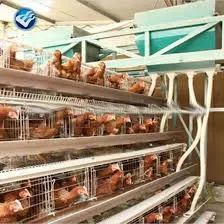Innovative Technologies in Electric Chicken Scalding Systems for Efficient Poultry Processing
ಆಗಸ್ಟ್ . 21, 2024 20:51 Back to list
Innovative Technologies in Electric Chicken Scalding Systems for Efficient Poultry Processing
The Importance of Electric Chicken Scalders in Poultry Processing
In the poultry processing industry, efficiency and hygiene are paramount. One critical step in this process is scalding, which prepares chickens for plucking by loosening the feathers. Over the years, electric chicken scalders have revolutionized the way this essential task is carried out. This article explores the significance of electric chicken scalders, their advantages, and their impact on poultry processing.
Understanding Electric Chicken Scalders
Electric chicken scalders use heated water to scald poultry before feather removal. These machines are equipped with heating elements and a temperature control system that ensure the water reaches and maintains the optimal scalding temperature. Typically, the ideal temperature for scalding chickens ranges between 140-160 degrees Fahrenheit (60-71 degrees Celsius). The scalding process not only loosens feathers but also helps in the removal of contaminants, promoting overall hygiene.
Advantages of Electric Chicken Scalders
1. Efficiency Electric chicken scalders operate faster than traditional gas or coal scalders. The immediate heating capability of electric models allows for quick temperature recovery, ensuring a steady flow of birds can be processed without prolonged delays. This efficiency translates to increased throughput in poultry operations, maximizing production rates.
2. Consistent Performance One of the major advantages of electric scalders is their ability to provide consistent heating. Unlike other methods that may suffer from fluctuations in temperature, electric scalders maintain a stable heat level, resulting in uniform scalding. This consistency ensures that all birds are adequately prepared for feather removal, minimizing the risk of uneven plucking.
3. Improved Hygiene With stricter regulations on food safety, maintaining high hygiene standards in poultry processing is essential. Electric chicken scalders are often easier to clean and maintain compared to traditional systems. The enclosed design reduces the risk of contamination from external sources, and many models are designed with sanitation in mind, featuring easy access points for cleaning.
electric chicken scalder

4. Energy Efficiency Modern electric scalders are designed to be energy-efficient, utilizing less power while delivering optimal performance. This not only lowers operational costs but also contributes to a more sustainable poultry processing environment. In an industry where energy consumption can significantly impact the bottom line, these savings are crucial.
5. Reduced Labor Intensity The automation of the scalding process through electric machines reduces the need for manual labor, resulting in lower labor costs and less physical strain on workers. This allows employees to focus on other critical aspects of processing, enhancing overall productivity.
Impact on Poultry Processing Industry
The integration of electric chicken scalders has significantly impacted poultry processing plants. The advantages of efficiency, consistency, improved hygiene, energy savings, and reduced labor intensity have made these machines a preferred choice for processors. Their reliability allows businesses to meet increasing consumer demand for poultry products without sacrificing quality.
Additionally, as consumer awareness of food safety grows, electric chicken scalders play a crucial role in ensuring that processed poultry meets high standards. By providing a safer and more efficient scalding process, these machines empower companies to adhere to food safety regulations while enhancing product quality.
Conclusion
In conclusion, electric chicken scalders are indispensable in modern poultry processing. Their efficiency, consistency, hygiene benefits, energy savings, and reduced labor demands have made them a critical component of the industry. As the poultry sector continues to evolve and adapt to new challenges, electric chicken scalders will undoubtedly remain at the forefront, facilitating safer and more efficient processing practices. Ultimately, this technological advancement represents a significant leap towards meeting both industry standards and consumer expectations in poultry production.
-
Automatic Feeding Line System Pan Feeder Nipple Drinker-Anping County Yize Metal Products Co., Ltd.
NewsJul.30,2025
-
Automatic Feeding Line System-Anping County Yize Metal Products Co., Ltd.|Durable Construction&Easy Maintenance
NewsJul.30,2025
-
Automatic Feeding Line System-Anping County Yize Metal Products Co., Ltd.|Pan Feeder Nipple Drinker&Durable Poultry Farming Solution
NewsJul.30,2025
-
Automatic Feeding Line System Pan Feeder Nipple Drinker|Anping County Yize Metal Products Co., Ltd.
NewsJul.29,2025
-
Automatic Feeding Line System-Pan Feeder Nipple Drinker|Anping County Yize Metal Products Co., Ltd.
NewsJul.29,2025
-
Automatic Feeding Line System - Pan Feeder Nipple Drinker|Broiler Farming Equipment
NewsJul.29,2025






